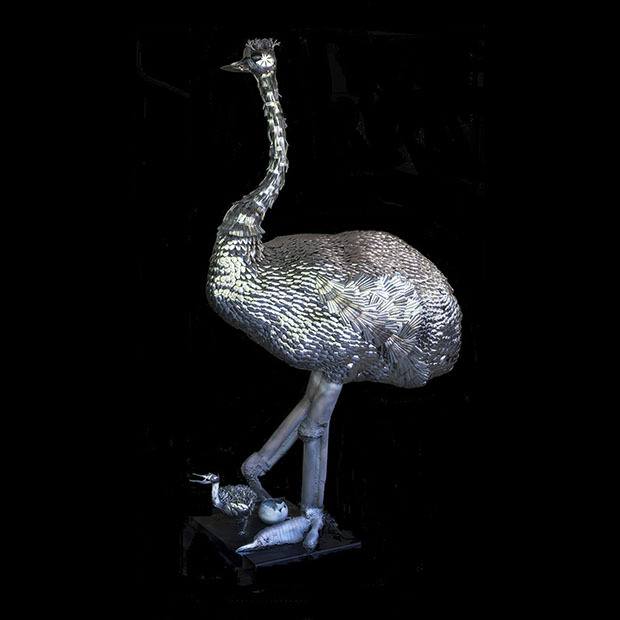Reporter staff
It stands at the northeast corner of D Street Northeast and East Main, one of the eye-poppingest, gotta-have-a-lookingest, wow-inducingest works in the in Auburn’s 2014-15 Downtown Sculpture Gallery.
Made mostly of recycled spoons and forks, an 8 1/2-foot-high ostrich.
Who woulda thunk it? An ostrich, right here, in Auburn.
Artists Greg Bartol and Debbie Drillevich did. After all, they made the bird in Green River Community College’s Welding Technologies Lab, answering the City’s 2014 call for art for the gallery.
“My art is often inspired by nature,” Bartol said. “I have welded pieces that look like wood, rocks, clouds, rain, water, animals and human figures. Capturing the essences is more important to me than strict realism.
“Steel is my choice of material because of its fluidity and forgiveness. Once the design process begins, clarity comes from handling the metal. Many of my materials for functional pieces include rusty steel, discarded parts of scraps from the welding certification processes, repurposed,” Bartol said.
As for the details, Bartol described the piece as durable, transportable and safe, with a body of recycled materials for the base, legs and the structured interior support.
Three thousand spoons went into this baby’s making. The neck is forks and there are serving utensils for the face. Each piece of silverware was individually welded with steel weld-wire. All of the silverware is stainless steel to maintain its shine and durability.
Its feet and legs are made of sturdy metal pipe to support the 300-pound creature, Bartol said.
The base is designed to be fork-liftable, heavy and secure, presenting the Ostrich at the right level for interaction with it as a sculpture. Inside the body are two sets of lights: the first is solar charged, and can be set to come on at dark; the other is battery powered and it can change color with a remote control.
“Through a collaborative effort with students at Green River Community College, several smaller birds and mammal sculptures were created using silverware. After those successes we chose to go big,” Bartol said.



